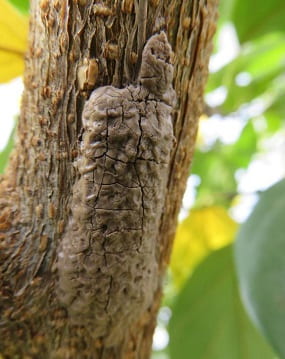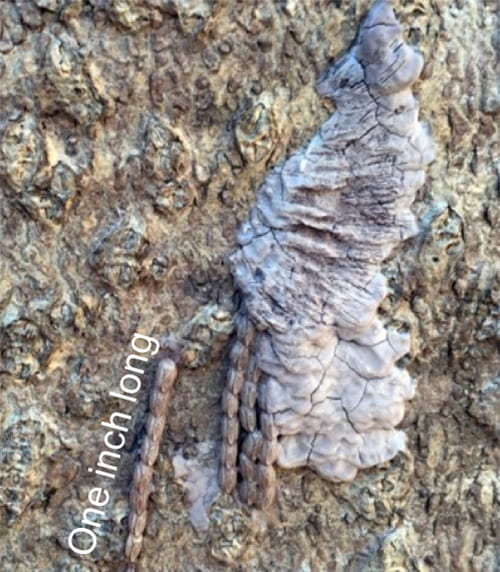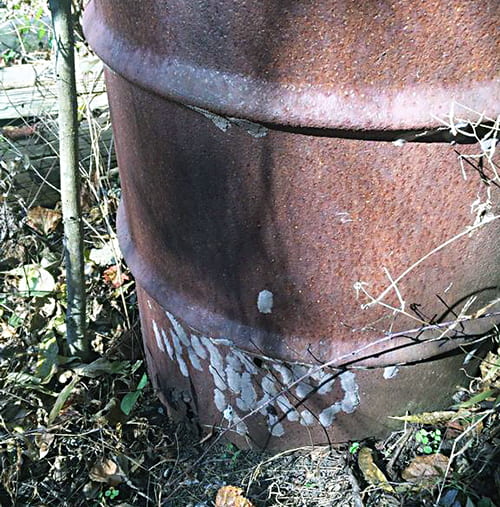
A population of spotted lanternfly (SLF) has been found in Ithaca, New York, just off the Cornell University campus. (Note: This post is an extension of the resources found on our website.)
But don’t look for these eye-catching pests now. The season for live adults is over. Throughout the rest of the autumn and winter, look for EGG MASSES on tree bark and branches and on almost anything that offers protection. Egg masses have been found on everything from automobile wheels, rusty fence posts, lawn furniture and even backyard swings. Part of the problem is that there is no ‘one sure’ place to look, though the adults do still tend to like Alianthus, Tree of Heaven.
While finding and removing egg masses is important, continue to examine anything that has traveled from areas where Spotted Lanternfly has become established. It is not a strong flier. Adults, nymphs and egg masses move from area to area through transportation of people and goods.



The population found this fall in Ithaca were found on their favorite host plant, another invasive species, tree of heaven (Ailanthus altissima). However, SLF also feeds on many other trees and plants, which, unfortunately, includes grapevines. With New York State’s important Finger Lakes grape-growing region and wine industries so close to Ithaca, state agencies and pest-control experts are particularly concerned about this pest’s impact in the region.
SLF is not a fly, but rather a large planthopper. Adults are about an inch long. SLF does not bite or sting and is not a threat to people, pets, or livestock. For most New Yorkers, it will be no more than a nuisance pest. Nymphal and adult SLF have piercing-sucking mouthparts that drill into plant phloem. SLF’s excrement—a sappy liquid called honeydew—makes things sticky and becomes a breeding ground for sooty mold, an annoying black fungal growth.
While SLF is native to Asia, it was first found in the U.S. in Pennsylvania. As the pest has begun to spread to neighboring states, knowledge and experience from Pennsylvania’s SLF researchers and specialists has been benefiting New York. Pennsylvania agriculture experienced losses of entire grapevine plants in some vineyards, and their economists estimate a potential combined annual loss to their state of $324 million and 1,665 jobs. Because SLF is a significant agricultural pest, research is underway even now, as Cornell investigates biological control and other management options.
The New York State IPM Program (NYSIPM) and the Northeastern IPM Center, in conjunction with the state’s Department of Agriculture and Markets and Department of Environmental Conservation, have been preparing for SLF’s potential arrival here for the last few years. In that time, we’ve developed educational resources to help recognize this insect and prevent its spread. Partnering with affected states, we’ve maintained a map tracking its spread and quarantines across the Mid-Atlantic and Northeast region.
To properly identify spotted lanternfly and understand its life cycle, its host plants, and how to monitor and manage it, visit:
“What Should I Do?”
If you think you see a spotted lanternfly, report it to New York State Department of Agriculture and Markets, using the Spotted Lanternfly Public Report.
Check out the SLF life cycle, below, so you’ll know what to look for. From fall through spring, look for egg masses. Some resources on egg masses:
In late spring and early summer, look for the nymph stages. In late summer through fall, look for adults.

Don’t transport this pest.
Individual and commercial travelers alike should be aware that there’s significant potential to unknowingly spread this insect to new areas. Adult SLF can end up in vehicles. Egg masses can be laid on virtually anything and can be easily overlooked. Inspect anything that you load into your vehicle. Consult the NYSIPM checklist.